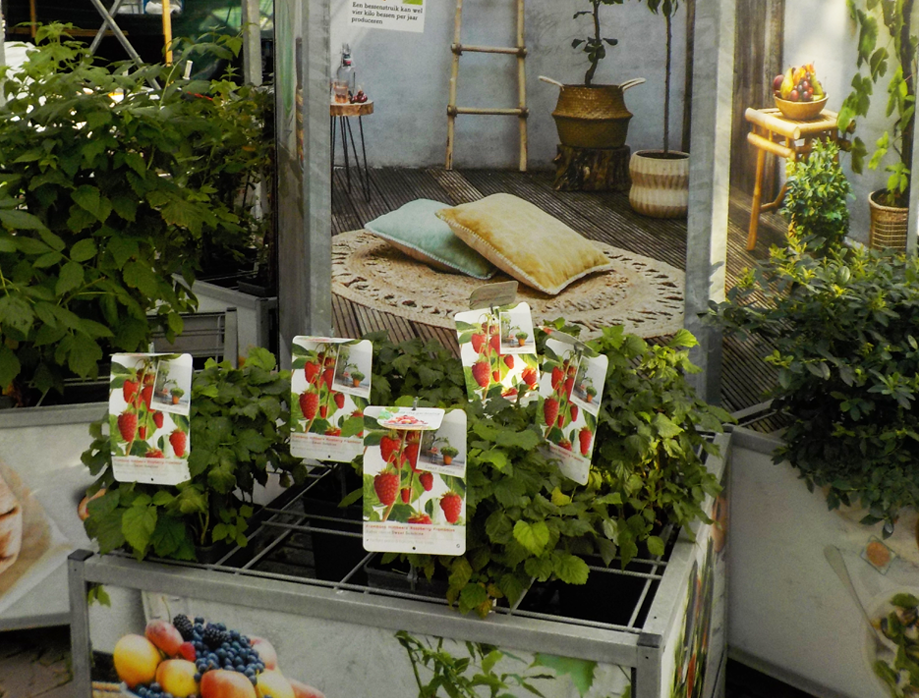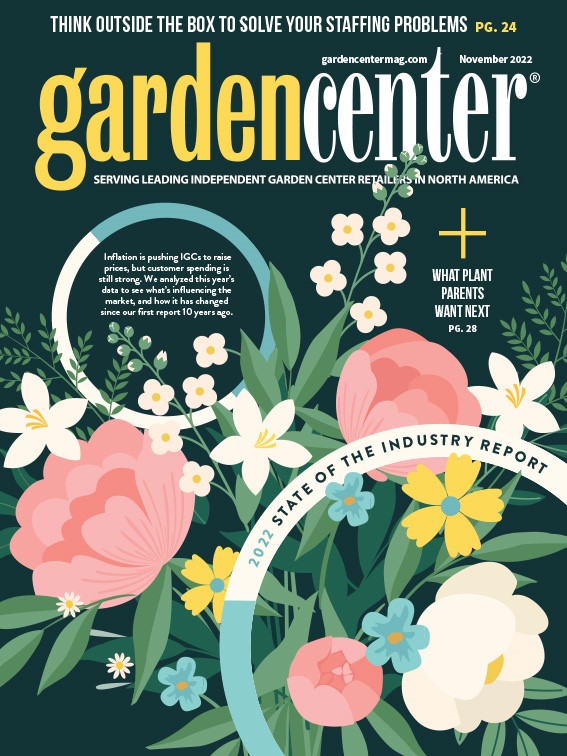

Editor’s note: This article is one in a three-part series on the IGCA Congress. Look for insights on new products and inspiring merchandising ideas in future issues.
The International Garden Centre Association hosts an annual Congress each year between September and October. After a two-year stoppage due to COVID-19, the Congress was held Aug. 27 to Sept. 3 in the Netherlands this year. The IGCA is an independent non-profit organization committed to the continuous improvement of the garden center industry worldwide. Past congresses have been in The United Kingdom, Czech Republic, Canada, Switzerland and Denmark. Next year, the Congress is in Italy from Sept. 20-24 (https://igca2023.com/).
AmericanHort is the official member representing the U.S. in the IGCA, enabling U.S. garden centers to participate in the week-long tour of green industry stops and points of interest in the country.
Sustainability and environmentalism were the overarching themes of this year’s IGCA Congress. We visited 13 garden centers, the Aalsmeer Auction, the Floriade, an orchid grower, a floral crop breeder, a container manufacturer and a microgreens grower, finishing the five-day extravaganza with a seaside gala with the sunset over the North Sea as a backdrop.
Here are some highlights and ideas to consider for your own garden center (or tuincentrum in Dutch):



Winkelroute
The “Winkelroute” (which translates to “shopping route”) that most stores have forces customers through most of the product in an IKEA-like manner. If you’ve never visited an IKEA store, the upper part shows many of the products for sale in their natural setting (such as beds in a bedroom setting). There is one set path that customers must take to get to the sales floor, and IKEA makes sure you walk by all their products without shortcuts.
Many of the garden retailers have a similar “mandatory” path that leads customers past nearly all of their merchandise with the opportunity for shortcuts. It was very different from many U.S. retailers.
There were very high interior spaces, much like their greenhouses, with great use of vertical merchandising. Quite a few of the garden retailers had greenhouse space with very tall greenhouses, much like you might expect from a production greenhouse. Several of the retailers took advantage of that high space to create some very vertical displays.





Cool signage
We know from our collective eye-tracking research that images are processed faster than text. Copplemans had some impressive signage which showed how climbing vines could be used (with the graphics for the fence and trellises). Their tags and signage for fruit trees showed not just the fruit but suggested uses and some lifestyle marketing like the sign with the hammock seen below. Plantcentrum Velden had a larger display with the fruit-producing plants showing not only fruit but uses and recipes.
As if two-dimensional tags weren’t good enough, Copplemans added a third dimension to some of their pollinator plants and fragrant varieties. They’re a bit pricier than two-dimensional tags but certainly eye-catching!
Orchid Growers Netherlands had a fancy, high-tech sign. They placed an RFID chip on the bottom of a container which customers could then place on an RFID reader shelf. The images on the screen to the right of the reader then showed great information about the plant. Very cool!



Floriade
Once each decade, horticultural professionals rally around an international horticultural exhibition. This year the city of Almere hosted the Floriade from April to October with the theme ‘Growing Green Cities,’ and integrating plans of more than 400 national and international participants. Highlights from this showcase included plants in sustainable uses and from sustainable production practices. The six-month long exhibition had inspiration everywhere we looked, and it was easy to find the grand and the practical aspects of horticulture here in this 148-acre display.
The entry sign was made from recycled and living materials and the four-story building was lavished with green walls. Recycled materials were used everywhere including canning jars filled with different colored water and chairs from the Indian pavilion. A floral display in the Japanese pavilion combined gerberas and raspberries. A rain chain was on display from recycled spoons. Perhaps the strangest display was the dolls used as the center for two floral sculptures.


Explore the November 2022 Issue
Check out more from this issue and find your next story to read.
Latest from Garden Center
- GS1 US Celebrates 50-Year Barcode 'Scanniversary' and Heralds Next-Generation Barcode to Support Modern Commerce
- Weekend Reading 7/26/24
- Retail Revival: Making gardening contagious
- ‘Part of our story’
- Registration now open for Garden Center Fertile Ground Webinar Series
- Dramm introduces new hose, sprinkler attachments for home gardeners, nurseries
- Meet the 15 Retailers' Choice Awards winners from Cultivate'24
- 2024 Top 100 Independent Garden Centers List





